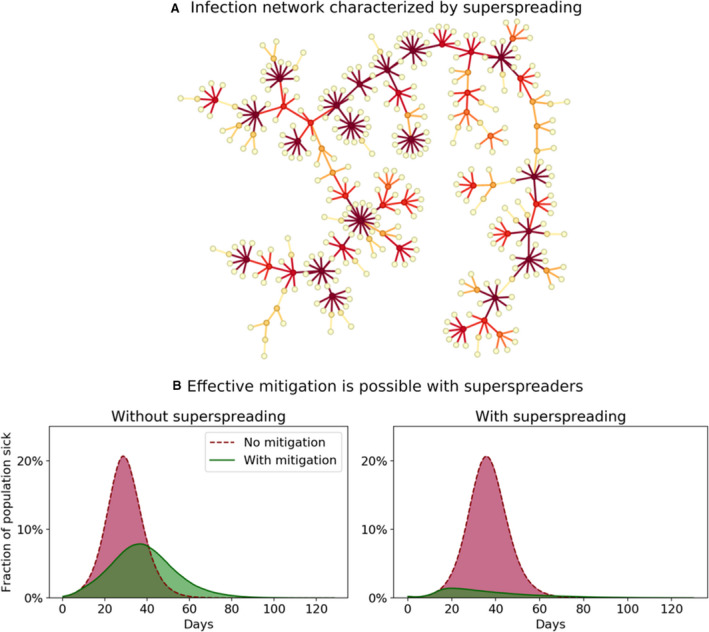Fig. 2.

Simulations of an agent‐based model with network and superspreaders (see full model and assumptions in [47]). (A) A single infection tree—the result of a model simulation of superspreading. The epidemic spreads due to a small proportion of individuals who are highly infectious, while the majority do not transmit the disease. (B) Effect of mitigating in the public domain to reduce opportunities for superspreading. If a sizable proportion of infections are caused by superspreaders, the simulations show that just reducing contacts in the public space (that is, outside households and workplaces/schools), has a large mitigation effect (right subpanel); but without superspreaders in the model, not much is gained (left subpanel). Data for panel B from [47]. In these simulations, superspreaders are individuals with a higher personal reproductive number, thus having the potential to transmit the disease to many in an unmitigated scenario. Drastically reducing the number of different persons that one meets (by e.g., banning large gatherings) thus has an outsized effect in a disease characterized by superspreading, providing an opportunity for improved mitigation. The theoretical background for this effect is explored in ref. [49].
